
Israel Is The Future Of The Middle East
Turkish women in 2023 were estimated to have an average of just 1.5 children over their lifetime, half of Israel's total fertility rate of 3 children per woman. The World Bank puts Iran's
2022 fertility rate at 1.7.
Improbable as it may seem, the core scenario according to present trends will make Israel the economic center of the Middle East sometime toward the end of the century.
The race is not to the swift nor the battle to the strong, Damon Runyon offered, but that's how the smart money bets. Any number of things could upend a linear projection of present trends. The exercise nonetheless leads to striking conclusions.
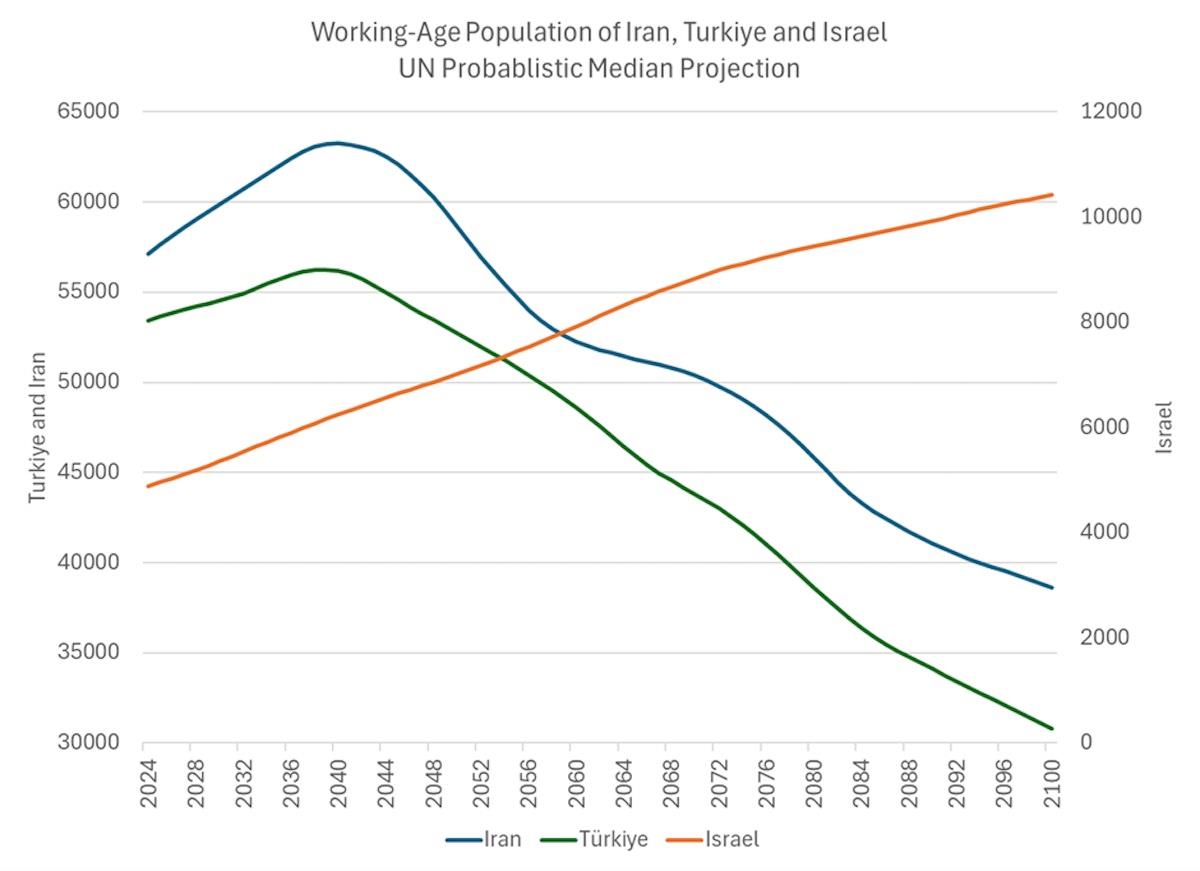
Chart: Asia Times
Israel's per capita GDP is now about US$55,000, or five times Turkey's $11,000. One might quibble about the yardstick, but there is no doubt that Israelis produce more than Turks do. If these trends continue, Israel's GDP will exceed Turkey's by sometime in the middle of the present century.
The largest Middle Eastern country by population, Egypt, has a GDP per capita of just $3,500. Its problems are of a different order than Turkey's or Iran's and its chances of becoming an economic power are minimal.
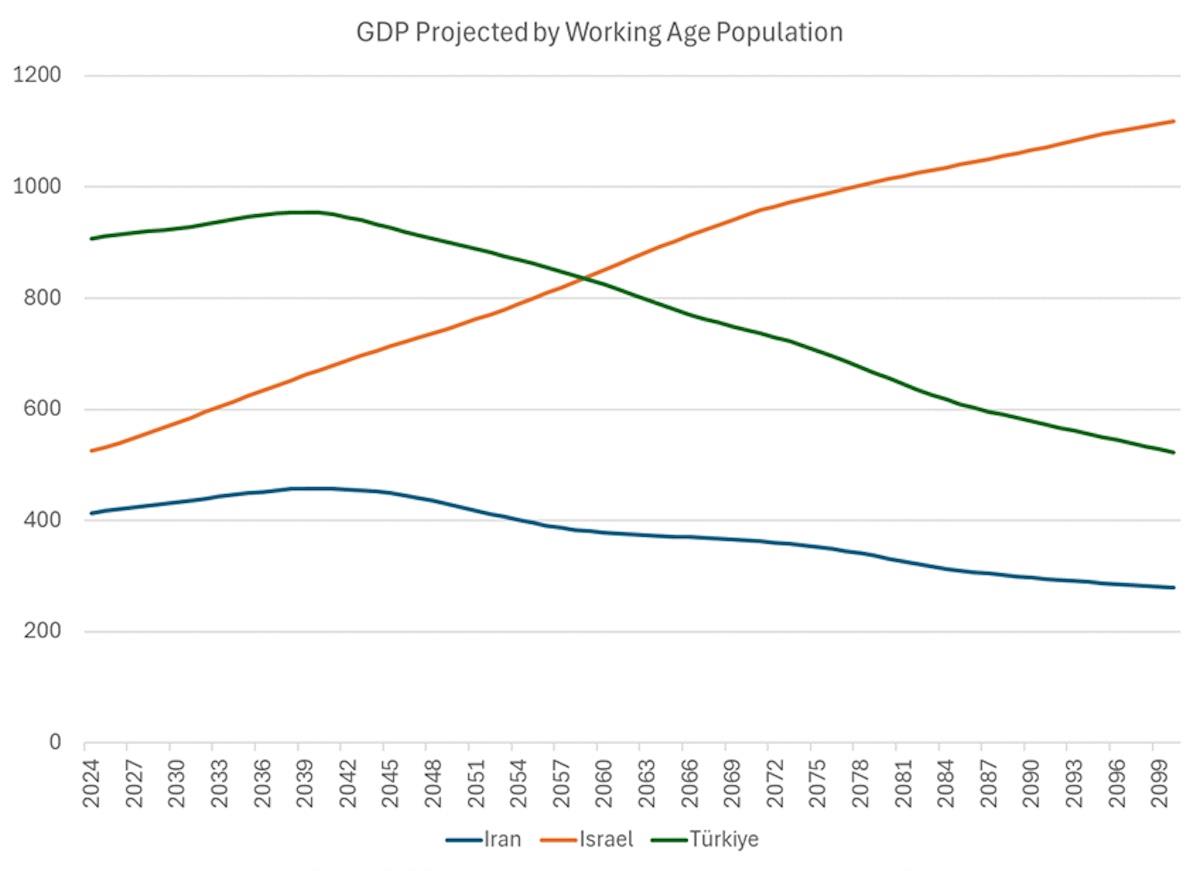
Chart: Asia Times
There is no question as to the cause of declining fertility in Muslim countries. Female literacy disrupts the norms of traditional society. Once Muslim women achieve a certain educational level, they reject the constraints of tribal society along with marriage and motherhood.
The link between female literacy and fertility is well documented by academic studies in the case of Iran, as I reported in my 2011 book“How Civilizations Die, and Why Islam is Dying, Too.”
In the case of Turkey, the evidence is overwhelming. The chart below compares the female literacy rate as reported by the World Bank (left-hand axis, inverse scale) and the total fertility rate.

Legal Disclaimer:
MENAFN provides the information “as is” without warranty of any kind. We do not accept any responsibility or liability for the accuracy, content, images, videos, licenses, completeness, legality, or reliability of the information contained in this article. If you have any complaints or copyright issues related to this article, kindly contact the provider above.






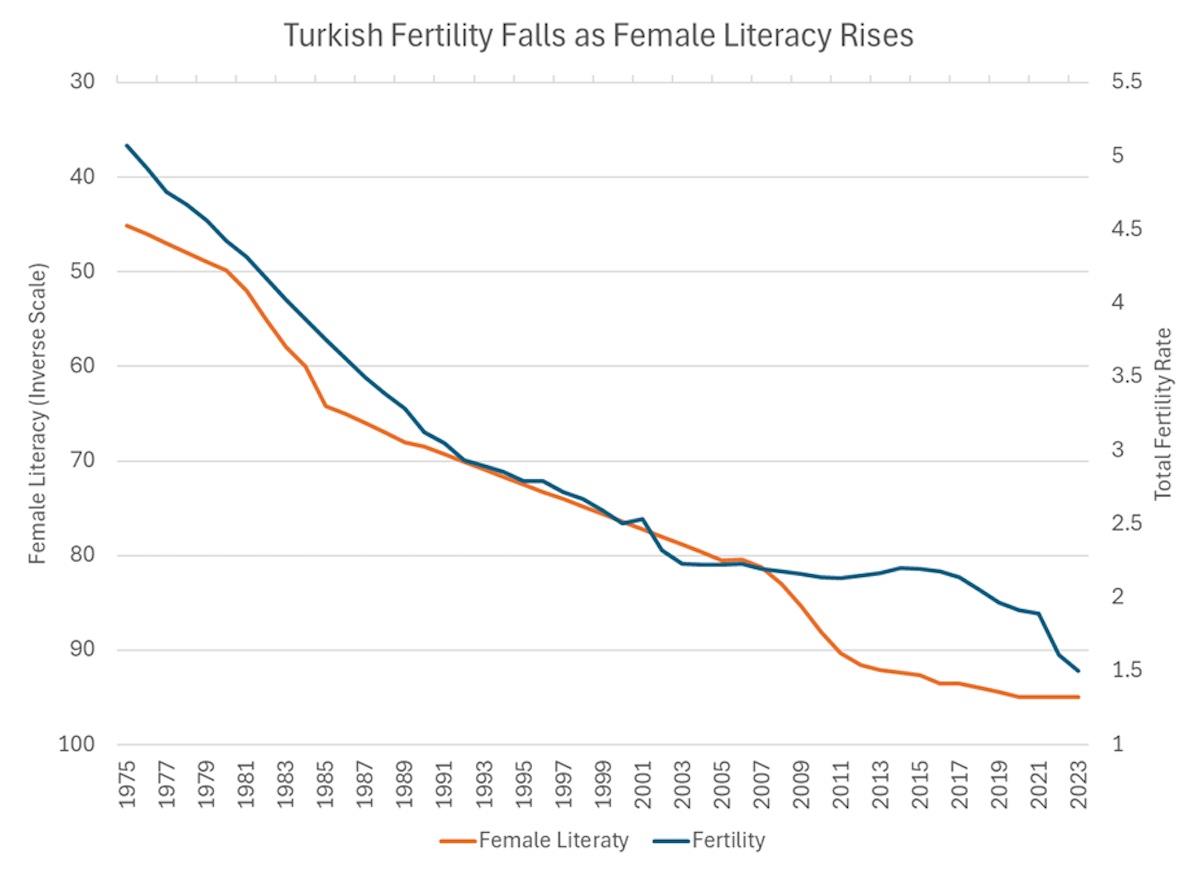
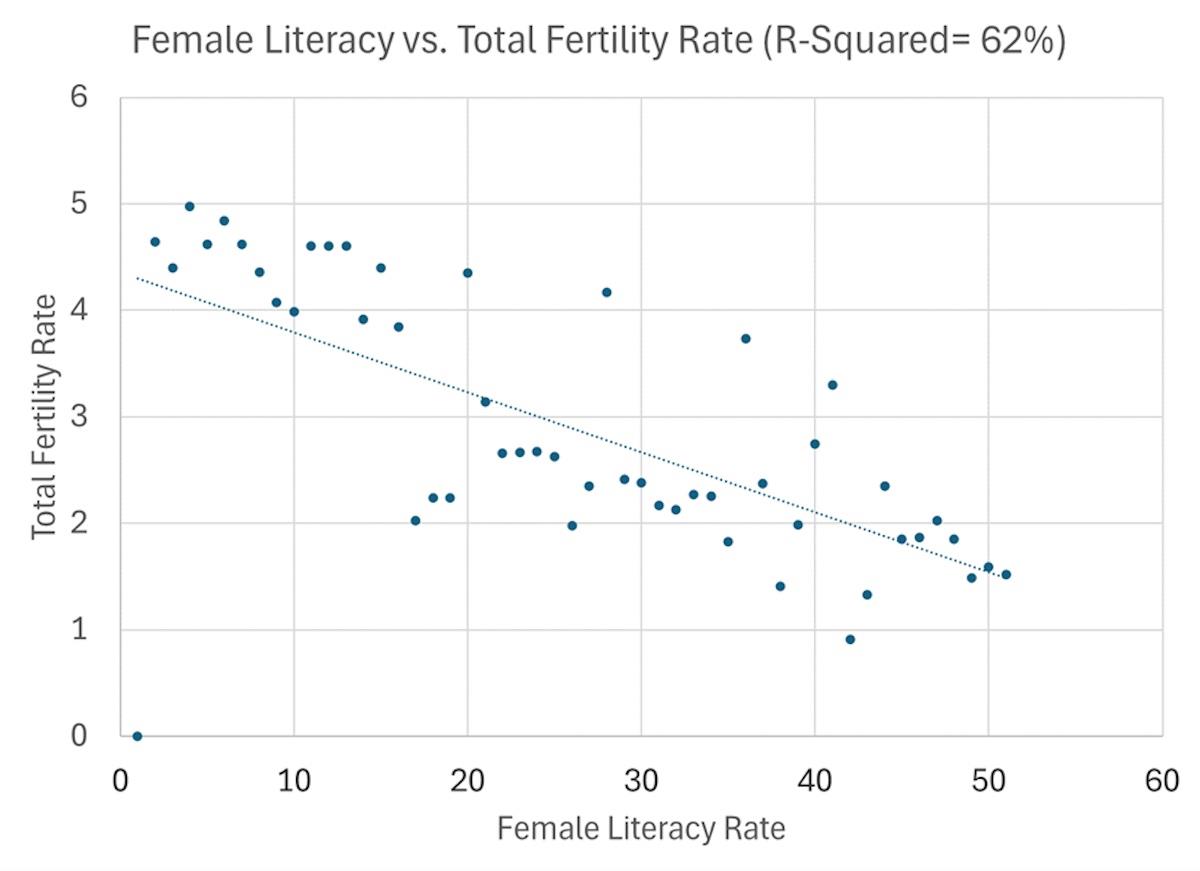
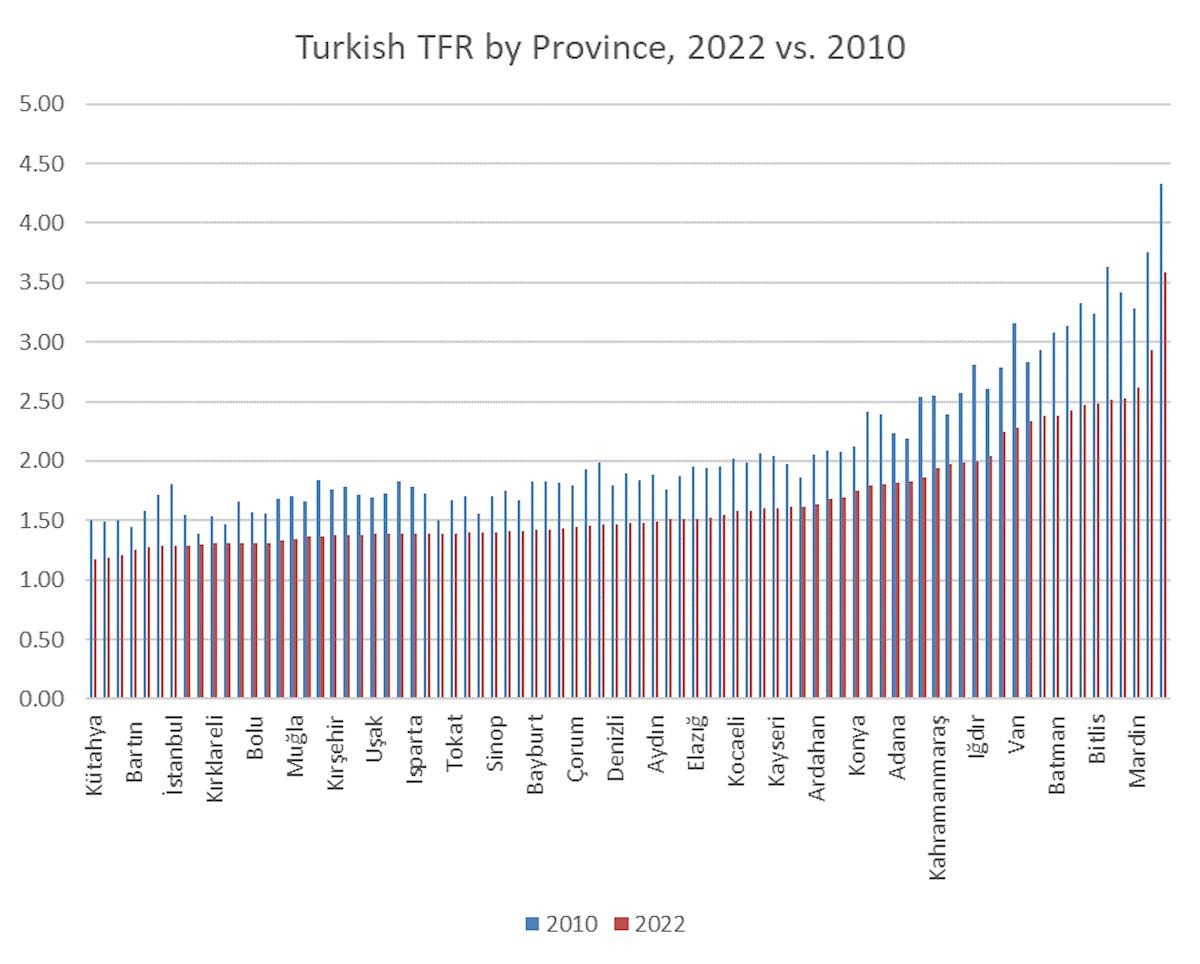




















Comments
No comment